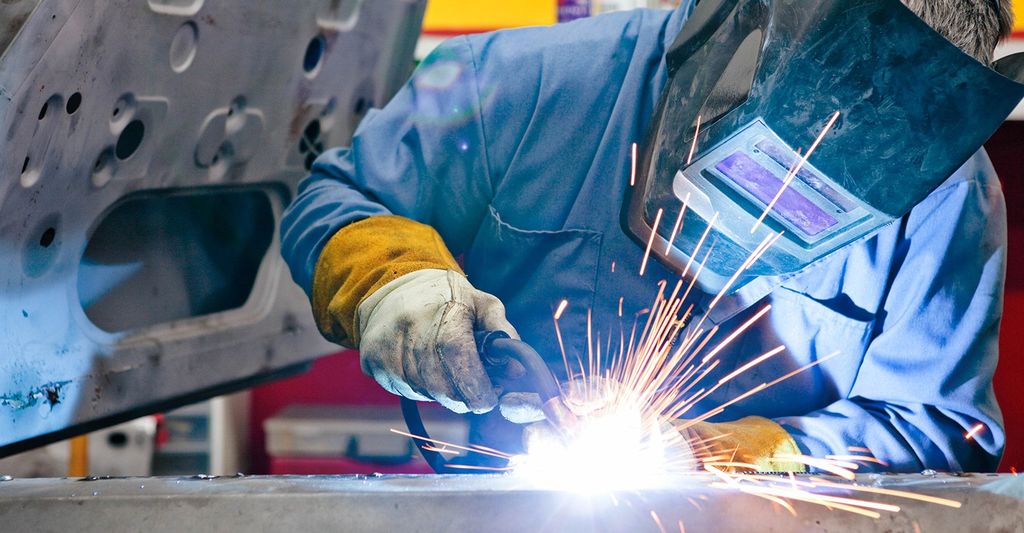How many types of welding are there?
Welding is a method of fusing together two or more pieces of metal using electricity or flame. Welding is used to construct buildings, make metal sculptures, build and repair cars, make gates and furniture, and for many other practical and aesthetic uses. There are multiple types of welding. Here is an overview of the most popular methods:
- Stick welding: Formally known as shielded metal arc welding, stick welding uses extreme heat applied at the seam of two separate metals to melt them together. A third (intermediary) metal may also be incorporated for added strength. As the metals cool, they are bonded together.
- Metal inert gas (MIG) welding: Formally known as gas metal arc welding, MIG welding uses a tool to feed metal wire into the weld puddle while an electrical arc melts the wire, which will fuse to the base metal upon cooling.
- Tungsten inert gas (TIG) welding: Formally referred to gas tungsten arc welding, TIG welding is a similar process MIG welding, but instead of using a tool that continuously feeds metal wire into the weld puddle, the welder must hold and manually feed the stick.
- Gas welding: A mix of flammable gas and oxygen is used to heat metal to the melting point.
- Forge welding: Forging metal is an ancient art that involves heating two pieces of metal until they are molten, then hammering them together.
How long is welding training?
Because there are different paths to learning to weld, there’s no single timeline for welding training. Some people attend school part-time while working their current job, while others can focus full-time on their welding training courses. People interested in learning how to weld as a hobby can also take classes from professional welders, such as at KCMA & Services in Waterloo, Indiana.
Expect to take at least two years to go from welding newbie to American Welding Society Certified Welder. A junior college Certificate of Completion welding course is two semesters full-time, or 10 units of coursework. With this certificate, students are qualified for an apprenticeship or internship, rather than a full-time entry-level job. Welding apprenticeships range from 6,000 to 8,000 hours long, equalling three to four years at 2,000 hours per year. Some junior colleges, such as Cerritos College in the Los Angeles area, offer more in-depth welding programs that lead to different welding certifications, such as arc welding and tungsten gas arc welding. These take three to four semesters to complete, so you could be qualified for an entry-level job in about two years of full-time study. Alternatively, you can prepare for employment more quickly through an intensive vocational program at a trade school. For instance, Ohio’s Lincoln Electric Company offers a comprehensive program that prepares people for a welding career in just 20 weeks and 600 hours of hands-on instruction.
How much is welding training?
The cost of welding training depends on where you take your classes and how quickly you want to complete the program. In general, junior college welding classes are the least expensive, but may take longer; trade schools offer intensive classes that lead to certification more quickly, but are more expensive. For example, Cerritos College, a junior college in Los Angeles that offers a welding training course, charges an average of $46 per unit; most of their welding certificate programs require 19 units of coursework, so cost about $875 each to complete. Pro-Weld, an on-site welding school in Idaho, offers three different welding courses. The 36-week welder fabrication and the 24-week gas tungsten arc welding courses each cost an average of $3,300, while pipe welding costs an average of $2,500 for a 24-week session or an average of $4,500 for a 52-week session. The 20-week comprehensive program at the Lincoln Electric Company in Ohio costs an average of $9,500. Many programs require students to purchase approximately $120-$200 worth of personal welding equipment in addition to textbooks or other class material fees.
Where can I take welding classes?
Your options for welding classes depend on where you live and whether you’re willing to travel. Many skilled professionals offer private or group welding classes across the U.S. Some high schools offer classes for teens, but many people learn from a private trainer or in a junior college or vocational school. Students learn basic welding, machining and fabrication processes, including using gas and arc welding equipment, and qualify for an apprenticeship or internship. Other colleges as well as vocational schools have two-year associate’s degree programs that prepare you to take the welding certification exam and seek full-time employment.
